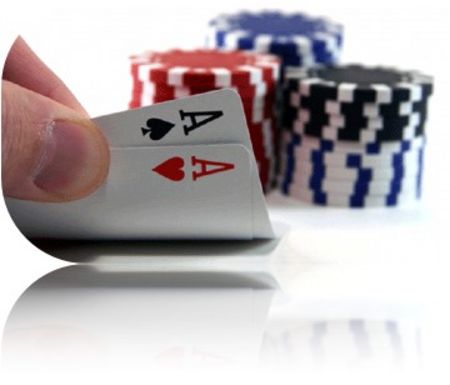Rainbow with One High Card

A rainbow flop with one high card is a good flop for top pair or an overpair, as your
opponents cannot have too many draws to hurt your hand. Examples include KK,
AQ, or QJ with a flop of Q53.
Although top pair is usually a good hand with a flop with only one high card, some
common situations where you should consider folding include:
-
The pot is raised before you act and you have a weak kicker.
- Several players pay a bet on the flop and you have a weak kicker.
- Several players pay a bet on the flop and your top pair is not very high; for
example, you hold T8 with a flop of T42.
- The bettor is a tight player who never bluffs and you hold a weak kicker.
There are other situations where you may need to fold top pair, but these listed
above are some of the more common. Sometimes you might even fold an overpair
when the action is very aggressive both preflop and on the flop. The general rule is
to consider folding against several opponents on the flop when you can't justify a
draw and your pair is not very high or your kicker is weak.
Let's look first at those strong hands that are not very vulnerable to over-cards.
Examples include a pair of aces or kings, or a pair of queens with an ace or king
kicker. Whenever the pot is small, you can either play these hands aggressively on
the flop, or wait until the turn to raise. Check-raising the flop is an excellent play to
try and get an opponent to commit some chips to the pot. If he decides to take a
free card, you still might get action if he improves to a second-best hand.
If the pot is large and you hold a premium pair, almost always play your hand
strongly. Choose the best strategy to drive out your opponents to give you the best
chance at winning the pot rather than try winning additional bets.
Let's look now at hands that are not so strong and more vulnerable to over-cards.
You should usually bet out or raise to drive out your opponents, One exception
when you might consider check-raising is when you are acting first and betting out
is unlikely to drive out many players and you think a player in late position will bet.
For example, you hold A ♣ T ♦ with a flop of T ♥
8 ♠ 5 ♦ or 9 ♠ 9 ♦ with an 8 ♠ 5 ♥ 3 ♣ flop.
If an opponent raised before the flop, it usually is difficult to drive out your
opponents with a bet since they are getting decent pot odds on a draw to
overcards. However, if the preflop raiser is acting last and bets, check-raising could
force the remaining opponents to pay two bets to continue playing.
With pots that are very large, it is sometimes very difficult to drive out many
opponents even by raising. As discussed in other chapters, your main concern in
large pots is selecting the best strategy to help you win the pot. This might mean
waiting until the turn to try and drive out your opponents. With a favorable turn card,
a raise or check-raise to two big bets can be more successful in driving out your
opponents than a raise on the flop.
Sometimes it is difficult to know whether or not you have the best hand on the flop.
If an opponent has an overpair to your top pair, you only have five outs. Even worse
is when he holds the same top pair but with a better kicker, since now you only
have three outs. In these cases, you want to find out as early as possible where
your opponents stand. One option is to bet out with your medium holdings. If you
are raised or several players cull, you can usually safely fold your hand or back off
on the turn. However, if you are against many opponents, you might just check to
see what happens behind you. If an opponent then bets and another raises, you
can safely fold saving yourself a bet.
Advanced Concept; Try to avoid just checking and calling your borderline hands to the river since
this can be much more expensive than gaining information early in the hand that might allow you to
safely fold.
For example, you hold A ♣ 4 ♣ with a flop of A ♦ T ♥ 2 ♠. If you bet out and an
opponent raises, you can safely fold against most opponents. This is less
expensive than simply checking and calling all the way to the river. If you are
against many opponents, you might just check to see what your opponents do
behind you before committing chips.
Related to the above concept, when you are acting last, sometimes the correct
strategy is to raise with a borderline hand. If you are reraised, you can safely fold. If
your opponent just calls, you might have the option of taking a tree card on the turn.
Successfully buying a free card saves you a bet on the turn while still allowing you
to showdown your hand for a possible win.
One other common situation is when you are in late position and all of your
opponents have checked. In general, you would almost always bet top pair,
however, there are some special situations when you might check the flop and wait
to see if the turn card is favorable. For example, if the pot is large and you are
worried about a check-raise from a better hand, you might check to see if you can
improve your hand on the turn. Another example is when the pot is so large it is
doubtful that a bet would drive out very many players. In this case, you might just
check your top pair to give yourself a better chance of driving out your opponents
on the bigger betting round.
NEXT...
Rainbow of All Rags

